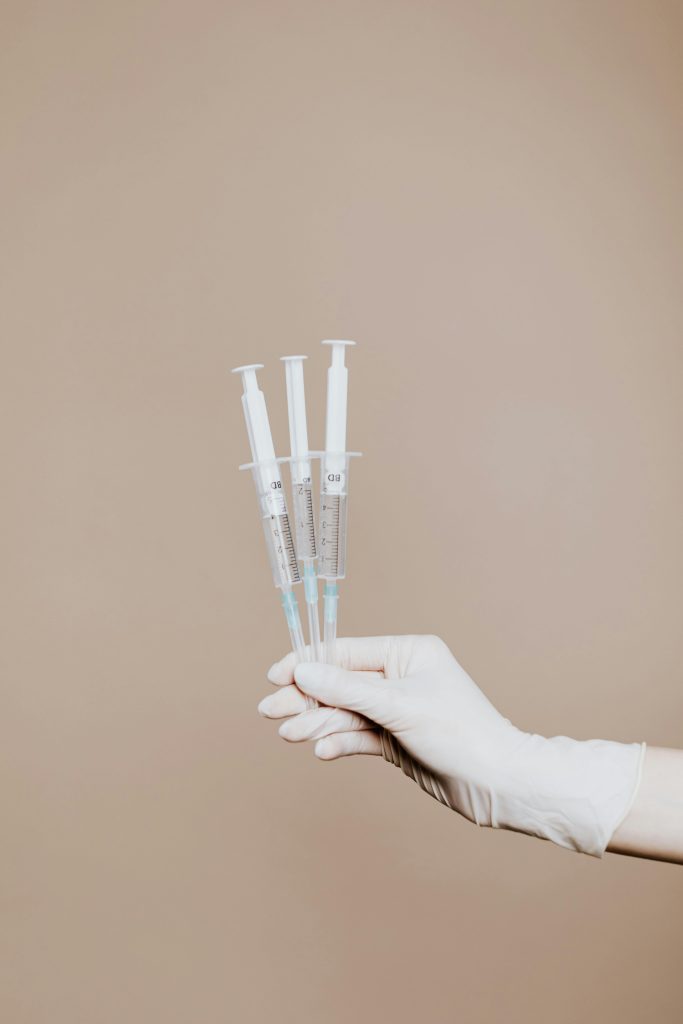Disposing of medical waste at home isn’t just about getting rid of trash—it’s about protecting yourself, your family, and the environment from harmful contaminants.
Whatever medical product or item you use, knowing how to dispose of medical waste at home safely is very important.
If medical waste isn’t handled properly, it can lead to injuries, infections, and even environmental pollution.
Imagine throwing used needles into your household trash—someone could get pricked, exposing them to serious diseases like Hepatitis B, Hepatitis C, or HIV.
This guide will walk you through the correct ways to dispose of different types of medical waste—needles, syringes, biohazard waste, medications, and more—so you can handle it safely and responsibly.
What Is Medical Waste?
Medical waste is any waste that comes from healthcare treatments, medications, or medical procedures done at home.
It includes:
- Sharps – Needles, syringes, lancets, scalpels, and tattoo needles.
- Biohazardous waste – Blood-soaked bandages, used gloves, or anything contaminated with bodily fluids.
- Pharmaceutical waste – Expired medications, unused pills, or liquid drugs.
- Dental waste – Used dental floss, extracted teeth, or dental sharps.
Unlike regular trash, medical waste can carry infectious diseases and harmful chemicals, so it needs proper disposal methods to keep people and the environment safe.
What Are Sharps?
Sharps—like needles, syringes, lancets, and tattoo needles—are among the most dangerous types of medical waste.
You can’t just toss them in your trash or flush them down the drain.
Sharps are anything that can puncture skin and potentially transmit infections.
Examples include:
- Diabetic needles
- Syringes
- Tattoo needles
- Dental needles
- Lancets (for blood sugar testing)
Improper disposal of used sharps can cause accidental needle-stick injuries, leading to serious infections.
How to Dispose of Used Needles and Syringes
Here’s the right way to get rid of used needles:
1. Use a Biohazard Disposal Container:
- Get an FDA-approved sharps container (available at pharmacies or online).
- If you don’t have one, use a thick plastic bottle with a secure lid (like a detergent bottle).
- Never use glass or thin plastic—it can break and cause injuries.
2. Keep the Container Secure:
- Drop the used needle directly into the container without bending or breaking it.
- Keep the lid tightly closed.
3. Don’t Overfill:
- Once the container is ¾ full, seal it with duct tape and label it “Sharps – Do Not Recycle.”
4. Find a Safe Disposal Method:
- Drop it off at a sharps disposal site (pharmacies, hospitals, or waste collection centers).
- Use a mail-back program (some companies allow you to mail your full sharps container for safe disposal).
- Check local laws—some areas allow you to dispose of sealed sharps containers in regular trash, but many do not.
How to Dispose of Unused Needles
If you have unused needles, don’t throw them loosely in the trash.
Instead:
- Return them to a pharmacy or medical facility for safe disposal.
- Use a pharmaceutical waste container for storage before disposal.
- Donate unused and unopened supplies to medical charities or disposal programs.
How to Dispose of Biohazard Waste at Home
Biohazard waste includes anything contaminated with blood, bodily fluids, or infectious materials.
What Counts as Biohazard Waste?
Biohazard waste include:
- Blood-soaked bandages
- Used gloves and gauze
- Items contaminated with bodily fluids
How to Dispose of Biohazard Waste at Home
Here’s how:
- Place biohazard waste in a red biohazard disposal container or a thick plastic bag labeled “BIOHAZARD”.
- Do not mix it with household trash.
- Take it to a medical waste drop-off site or check if your city offers home medical waste pickup.
Pharmaceutical Waste Disposal: How to Get Rid of Medications
Unused or expired medications should never be flushed down the toilet—they can pollute water supplies and harm aquatic life.
How to Dispose of Expired Medications
- Drug Take-Back Programs:
- Many pharmacies offer medication disposal programs where you can drop off unwanted medicines.
- The DEA’s National Prescription Drug Take-Back Day also provides safe disposal locations.
- DIY Disposal Method (if no take-back options available):
- Mix the medicine with coffee grounds, cat litter, or dirt.
- Place the mixture in a sealed bag and throw it in the trash.
- Use a Pharmaceutical Waste Container:
- If you regularly dispose of medications, keep a pharmaceutical waste container at home.
Dental Waste Disposal: What to Do with Used Dental Products
Dental waste disposal at home includes getting rid of:
- Used dental floss
- Toothbrushes and toothpaste tubes
- Extracted teeth and dental sharps
How to Dispose of Dental Waste Safely
- Wrap extracted teeth and dispose of them with regular trash (unless they contain fillings—those should be taken to a dentist for proper disposal).
- Dispose of dental sharps (like needles or blades) in a biohazard disposal container.
- Recycle toothbrushes and toothpaste tubes where possible.
Legal and Environmental Considerations
Improper disposal of medical waste can harm the environment and lead to legal trouble.
Some states have strict regulations on how to dispose of sharps containers and biohazard waste at home.
How to Find Local Medical Waste Disposal Rules
- Visit your state or local health department’s website.
- Check the EPA’s guidelines on medical waste disposal.
Final Thoughts
By now, you should have a clear understanding of how to dispose of medical waste at home safely and legally.
Following proper steps to properly dispose of your medical waste protects you, your family, and the environment.
Whenever possible, use take-back programs, sharps disposal sites, and biohazard containers to dispose of medical waste the right way.
If you’re unsure about local regulations, check with your pharmacy or health department for guidance.
